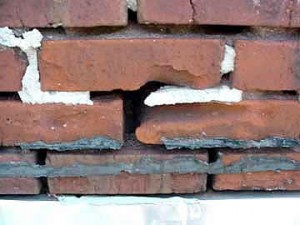The Rundown on Chimney Mold

Molds can pose serious health risks to you and your family. Don’t allow them to flourish in your chimney. Make sure water and moisture stay out!
Mold is something you never want in your home, and most people think of the basement as the most common area for mold growth. However, if you have a leaky chimney with water penetrating your chimney walls, your chimney can be a prime spot for mold growth. Mold can spread quickly through your house, so if you have chimney mold, it should be removed as soon as possible to keep you and your family safe from the adverse health effects breathing in mold spores can cause. Chief Chimney Services would like to answer a few questions for you about chimney mold to inform you how to be on the lookout for a mold invasion of your fireplace and chimney.
What causes fireplace and chimney mold?
According to the website Mold Advisor, unused fireplaces are the most common places for chimney mold to develop. The dark, damp, and poorly vented unused fireplace creates the perfect environment for mold to grow. The warm summer months, when you are not using your fireplace, is the perfect time for this to occur. The most likely fireplaces and chimneys to develop mold growth have leaks somewhere in the chimney because water is needed to allow mold to grow. Chief Chimney Services can not only take care of removing chimney mold, but we can also repair leaky chimneys to keep water out which lowers the possibility of mold to even occur.
What are the signs of chimney mold?
If the mold has spread, you may see mold growing on the bricks of your outer fireplace or even on the walls or ceiling of the room that contains the fireplace. If you do spot mold growth on the outside of your fireplace or in the room, call Chief Chimney Services immediately to have us inspect the inside of your chimney for more mold. Most likely, the mold is unable to be seen because it is only growing on the walls of the inside of your chimney. However, you will probably notice the distinctive musty smell of mold coming from your fireplace. You and your family may also be suffering from respiratory problems due to breathing the mold. If you suspect chimney mold, again call us as soon as possible to inspect your chimney and fireplace and remove the mold.
What are the adverse health effects mold can have on me and my family?
In the beginning, mold can cause breathing problems similar to the common cold with sneezing, coughing, headache, runny nose, and a sore throat. However, prolonged breathing of mold spores can cause serious illnesses like asthma attacks, chronic sinusitis, allergic reactions, and pneumonia.
How do I remove chimney mold from my fireplace and chimney?
You are strongly advised to allow professionals like Chief Chimney Services to remove all of the chimney mold growth as it can be a hazardous job. However, if your doctor okays it, you can clean up any exterior mold from bricks by using an antifungal cleanser and a stiff brush. Be sure to wear a breathing mask when cleaning up mold.
If you have any other questions about chimney mold, contact Chief Chimney Services today. Our staff is happy to assist you quickly with this possibly dangerous problem.

